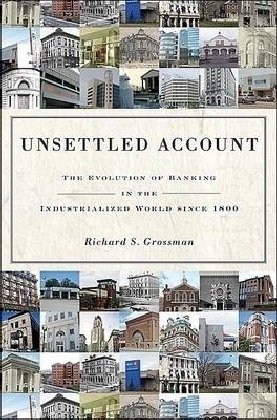Mehr lesen
Zusatztext "What Grossman has done, in drawing our attention to the way in which past banking crises have been dealt with, is a significant contribution to the literature on the problems and difficulties involved in dealing with banks." ---Jonathan Warner, European Legacy Informationen zum Autor Richard S. Grossman is professor of economics at Wesleyan University and a visiting scholar at the Institute for Quantitative Social Science at Harvard University. Klappentext "This excellent and well-organized book will be the standard reference on commercial banking history for years to come."--Michael Bordo! Rutgers University"Until now! banking history has stubbornly clung to national boundaries! comparative inquiries being rare. In this book! the author has done an excellent job of synthesizing the large and varied literature! producing a readable and accessible book."--Joost Jonker! Utrecht University Zusammenfassung Commercial banks are among the oldest and most familiar financial institutions. When they work well, we hardly notice; when they do not, we rail against them. This book takes a comparative look at the development of commercial banking systems over the years in Western Europe, the United States, Canada, Japan, and Australia. Inhaltsverzeichnis List of Illustrations xiii List of Tables xv Preface xvii CHAPTER 1: Introduction 1 The Challenge of Intermediation 1 Banking and Economic Growth 5 Securities Markets! Banks! and Other Intermediators 10 The Scope of This Book 13 The Argument 16 CHAPTER Outline 27 CHAPTER 2: The Origins of Banking 28 Early Banking Functions 30 Credit Creation 32 Medieval Beginnings! Modern Prerequisites 35 Government Debt and the Beginnings of Government Banks 38 Government Banks 41 Private Banks 45 Commercial Banks 48 CHAPTER 3: Banking Crises 53 Financial Crises and Banking Crises 54 The Consequences of Banking Crises 59 The Causes of Banking Crises: Hypotheses 61 Evidence from before 1870 64 Evidence from 1870 to World War I 66 Evidence from the Interwar Period 74 A Durable Pattern 81 CHAPTER 4: Rescuing the Banking System: Bailouts! Lenders of Last Resort! and More Extreme Measures 83 Bailouts 86 Lenders of Last Resort 98 More Extreme Measures 104 Making the Cure Less Costly than the Disease 107 CHAPTER 5: Merger Movements 110 Consequences of Mergers 111 The Urge to Merge 112 Evidence 115 Matching Evidence with Explanations 120 CHAPTER 6: Regulation 128 Motives for Regulation 129 Entry Regulation 134 The Emergence of Charters 134 Banking Codes versus Corporation Law 141 Capital Requirements 145 The Role of Capital 145 Market Capital Requirements 147 Explaining Government Capital Requirements 150 The Impact of Government Capital Requirements 155 Other Regulations 157 Universal Banking 157 Identity of the Banking Supervisor 162 Summary 167 CHAPTER 7: Banking Evolution in England 169 The Bank of England and British Government Finance 170 Private Banking in London and the Provinces 173 Joint Stock Banking Regulation! 1826-57 175 Mergers 183 Crises and Responses 189 Fiscally Driven Evolution 195 CHAPTER 8: Banking Evolution in Sweden 197 The Riksbank and the Beginnings of Swedish Banking 198 Bank Politics and Legislation: Enskilda Banks 202 The Emergence of Modern Banking 207 Mergers! Crises! and Government Intervention! 1903-39 209 Universal Banking 215 Sweden in a Nordic Context 217 CHAPTER 9: Banking Evolution in the United States 221 The First and Second Banks of the United States! 1791-1836 222 From Chartered to Free Banking! 1837-62 229 The National Banking Era! 1863-1913 230 The Crisis of 1907 and the Founding of the Federal Reserve 243 The Great Depression 245 Summary 249 CHAPTER 10: Constrained and Deregulated Banking in the Twentieth Century and Beyond 251 Constrained Banking 251 The Era of D...

